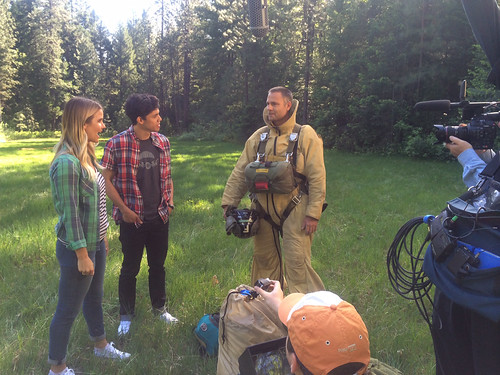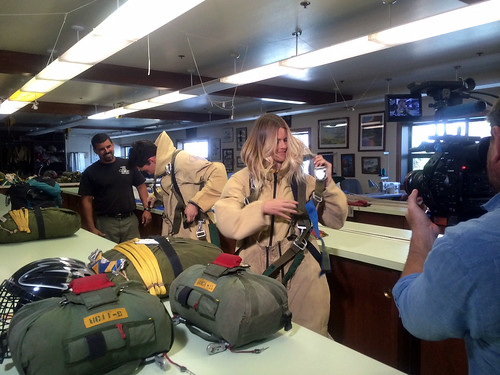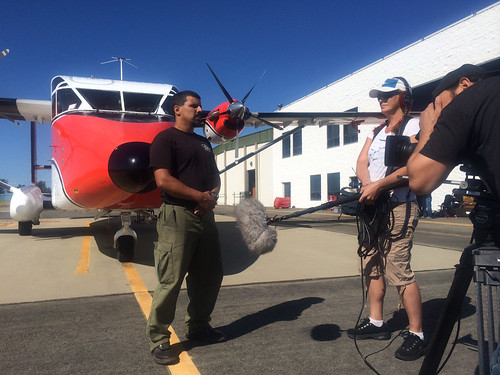
The U.S. Forest Service and movies-goers have seen agency-managed lands as the backdrop for dozens of motion pictures over the years, but this year it is participating in the magic of Hollywood in a slightly different way – as a creative consultant for the soon-to-be-released “Planes: Fire and Rescue.”
Two film crews from Disney Studios descended on the agency’s Redding Smokejumper Base in northern California the first week of May. They were there to interview and take video footage of the Forest Service’s firefighters in advance of the movie’s release in July.
The plot of the second animated Planes movie revolves around the transition of Dusty Crophopper – voiced by Dane Cook – into the dangerous yet exciting world of wildland firefighting after he learns he can no longer fly in races.
The Disney crews spent three days filming units suiting up, boarding aircraft and jumping into simulated wildfire zones and conducting water drops. That footage will be used in a Disney Channel special on the making of the movie and will also be included as behind-the-scenes extras when the film is released on DVD.
Soon after deciding on the general script for “Planes: Fire and Rescue,” Disney turned to the experts. The Forest Service, CAL FIRE – California Department of Forestry and Fire Protection – and the National Park Service are creative consultants on the world of wildland firefighting.

Art Hernandez, Disney Head of Story, said he got the idea for the theme of “Planes: Fire Rescue” after learning that the Pratt-Whitney plane that is Rusty’s “alter ego” serves many purposes beyond cropdusting. The plane is also used in fighting prairie fires in Texas and Oklahoma.
In order to accurately capture the excitement and spirit of smokejumpers and the aircraft they jump out of, Disney crews mounted “go pro” video cameras on smokejumpers and inside several parts of aircraft, as well as filmed crew suiting up and practicing jumps.

Luis Gomez, Redding Smokejumper Base operations manager, ensured that every single filming technique conformed to the unit's rigorous safety standards.
The film crews saw firsthand the grueling training required to make the cut as a Forest Service smokejumper: During a morning training exercise on the Shasta Trinity National Forest, eight rookies each loaded down with 80 pounds of gear landed in a small meadow surrounded by towering conifers, only to see their supply cargo carrying pulaskis, chain saws and other equipment deliberately dropped into trees. After being critiqued on their landings by instructors, they would have to climb trees to free the trapped cargo and then set out on a multi-night exercise deep in the rugged terrain of the Trinity Alps to simulate a real fire response.
And that, according to Greg Fashano, isn't even the hard part of the job.
“The most difficult thing I remember in my 20 years of smokejumping is the exit, having to hump 150 pounds of gear out through underbrush and steep terrain after having spent two weeks fighting fires on little sleep,” he said. “One time we had to hike 18 miles using only a compass and a map to get to the nearest road for pickup.”
Sounds like the makings for a good movie.
Related content: List of movies filmed all or in part on a national forest or grassland.

